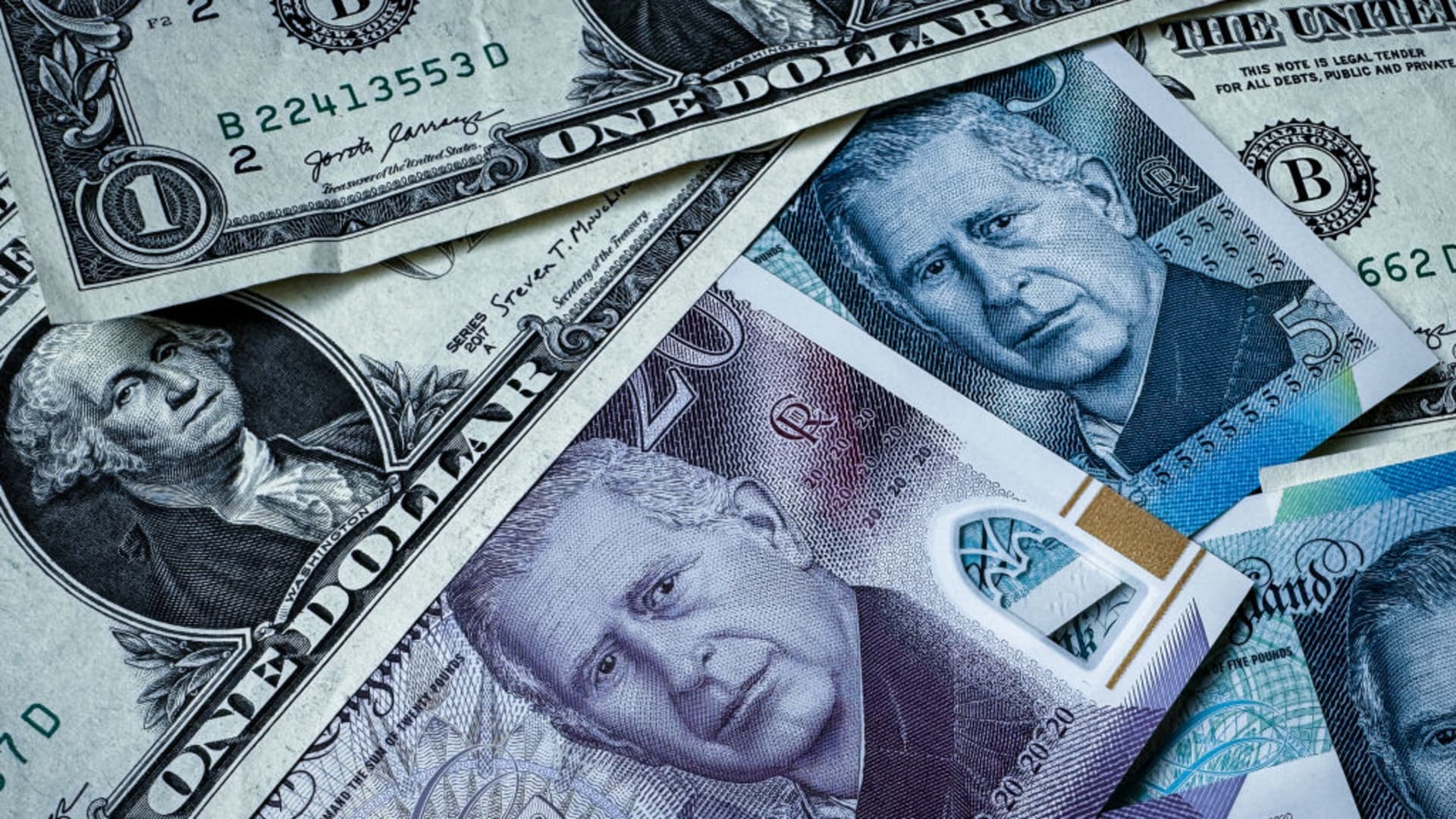As the U.S. dollar falters, one currency could be a major beneficiary: the British pound , which Bank of America’s Athanasios Vamvakidis says is on track to return to its pre-Brexit value. Vamvakidis, global head of G10 FX strategy at BoA, forecasts that sterling will rise above $1.50 in 2026. The pound has not traded at those levels against the greenback since the start of 2016 — the year the U.K. voted to leave the European Union . The British currency, which plummeted in the immediate aftermath of the EU referendum, has failed to fully recover in the nine years since the vote was held. In early trade on Wednesday, sterling was down 0.1% against the U.S. dollar at around $1.34. Since the beginning of the year, the British pound has gained around 7% against the dollar, which has seen a broad sell-off amid global concerns around U.S. President Donald Trump’s tariffs regime . According to Bank of America’s Vamvakidis, sterling has more upside ahead. His team’s base case is that the pound will reach $1.43 by the end of 2025 — that’s a gain of around 6.8% from current levels – before rallying to $1.54 by the end of 2026. That would mark a 15% increase from today’s prices and the first time the British currency has exceeded the $1.50 level since the 2016 EU referendum. “We believe U.S. trade policies give more incentive to the EU and the U.K. to have closer relations. They’ve been envisioning a Brexit reset, but before this year, both sides were not as ambitious,” Vamvakidis told CNBC Pro on a call. “Now you can argue it’s a win-win situation for them to improve trade relations in particular.” Several other factors are also influencing Bank of America’s outlook for sterling: the U.K.’s services-oriented economy, which insulates it somewhat from U.S. tariffs on goods; projections for four interest rate cuts from the Bank of England this year; lower reciprocal tariffs being aimed at the U.K. than many other countries; and higher economic growth forecasts for Britain than the EU. Bank of America expects the U.K. economy to expand by 1.1% this year and 1.3% in 2026, compared to 0.8% GDP growth in the EU this year and 1% next year. As a result of the regional macroeconomic picture, Bank of America also expects sterling to rise in value against the euro. Vamvakidis is forecasting that the euro will fall around 3.5% from current exchange rates against sterling to hit £0.82 by the end of the year. He told CNBC that for his baseline to be wrong, the Trump administration would need to “pivot across the board” on trade policy, migration and fiscal policy. “[It would take] a full U-turn back to conventional policies, which I think is unlikely,” Vamvakidis said. “Things may end up somewhat better than initial policy announcements, but it’s unlikely to go back to where we started. If we do [see a pivot], the dollar will strengthen, but I don’t think it will strengthen back to where it was.” Bank of America isn’t the only big-name investment bank forecasting further upside for the pound. Analysts at Deutsche Bank Research are expecting the currency to reach $1.37 by the end of 2025 and $1.43 in 2026, with even more upside to be realized in the subsequent two years, when the lender’s analysts see sterling hitting $1.45 – a level also not seen since before the Brexit vote. Strategists at Goldman Sachs, meanwhile, said last week that the bank was taking a “cautiously optimistic” view on sterling, driven by the U.K. being less vulnerable to tariff shocks than its EU neighbors and the wider strengthening of European currencies. Goldman Sachs’s strategists expect sterling to trade at $1.39 against the U.S. dollar by the end of the year.





